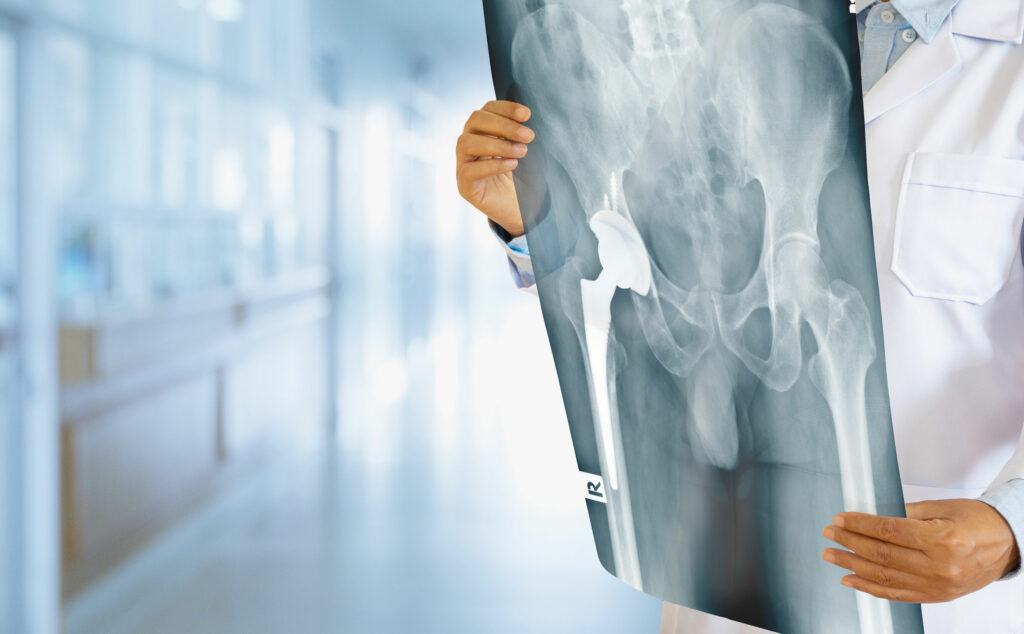Key points
- Primary hip dislocation is an extremely rare injury that occurs after trauma.
- People who already have a hip prosthesis are more susceptible to suffering a dislocation due to a bad movement.
A dislocation happens when a joint moves out of place. In this sense, the hip is one of the joints with the greatest movement in the body, which makes it susceptible to suffering this type of injury, says Dr. Justino Fernández Palomo, orthopedic surgeon and manager of the highly specialized joint replacement clinic at ABC Medical Center.
There are two types of hip dislocation:
- Congenital hip dislocation. Its correct term is “developmental dysplasia of the hip” or “DDH” and it is a problem that arises from birth.
- Traumatic hip dislocation. Secondary injury to an accident where the hip suffers a major trauma that takes it out of its anatomical socket.
Due to its origin and possible sequelae, traumatic hip dislocation is an emergency that needs to be attended to immediately for various reasons: the patient will suffer a lot of pain from the injury, movement will also be completely limited and, if not treated in time, they can suffer from avascular necrosis in the femoral head, this means that the irrigation of the femoral head is cut off due to the rupture of some blood vessels that nourish the bone.
Dr. Fernández says that traumatic hip dislocation is divided into two conditions depending on its origin, which will affect both the patient’s recovery and the type of care they should receive:
Primary hip dislocation
This dislocation occurs in a virgin joint, which had not previously suffered this type of injury. It is generally related to an acetabulum fracture, a cavity that is part of the pelvis and where the head of the femur fits. This injury is rare.
Normally it happens due to some type of accident where it is necessary to combine factors like position, force, and speed such as a car or motorcycle accident, falls over two meters high, or a run-over. There are also cases where in a fall the patient opens the leg and, later, crosses it forcefully which could result in a dislocation.
Within this type of injury, an isolated hip dislocation rarely occurs and there is no pelvic fracture.
A primary dislocation could be generally considered something easy to solve by having to position the head of the femur in the acetabular cavity. Subsequently, take care that the injured tissues heal and rely on the use of crutches or a walker, being able to return to normal life quickly. But it must be remembered that this type of injury is usually caused by trauma, which may have left damage such as a pelvic fracture, every case is different and the recovery time could be much longer and more complex.
Hip prosthesis dislocation
In general terms, this is the most frequent dislocation and occurs in patients who already have a prosthesis, because it can be dislocated more easily than a non-operated hip.
Any patient who has previously undergone hip surgery, regardless of the primary cause, will have a series of restricted movements for the rest of their life. This does not mean that any sudden movement will dislocate it, but it does have a greater chance of happening.
Such a situation is caused because every prosthesis has a position governed by a mechanical limit, and sometimes this limit can get loose. Dangerous movements include crossing your legs, sitting on low chairs or benches and even some toilets can cause this, becoming a risk for the prosthesis and predisposing to a dislocation.
The reason for a dislocated hip prosthesis must be identified, such as a forced movement, a movement with more tension than it should be, or a movement that overextended the mechanical range. Subsequently, the orthopedist will perform a specific maneuver, the patient will possibly be under anesthesia and the prosthesis will be put back in its place.
Once this is done there are two possible situations. The prosthesis fits perfectly and, after a few days, the patient returns to their normal life. But it could also happen that the patient has other dislocations; in this situation, the prosthesis has reached a point of instability, which implies that they will have to undergo a new surgery for a prosthesis replacement.
Symptoms of a dislocated hip
Although the origin of a primary hip dislocation and a hip prosthesis dislocation is different, the patient will still perceive a clicking sound as the femur slips, followed by severe pain, and, if standing, a fall because the patient cannot stand with a dislocated hip.
Visually, an abnormal position and a decrease in the length of the limb can also be perceived where it is rolled inwards, which is an unequivocal sign of hip dislocation.
Any hip dislocation is a serious injury, says Dr. Fernández, because it requires immediate medical attention due to the very severe consequences that it can trigger, such as rupture of ligaments and blood vessels, triggering the previously mentioned avascular necrosis of the femoral head. This type of injury has several factors that can favor a good result as long as you receive prompt medical attention (if the dislocation is fixed within six hours) and have adequate follow-up, all this will allow detecting any possible problem and avoid the need for major surgery.
At the ABC Medical Center’s Orthopedics and Traumatology Center, we can provide you with specialized care. Contact us!
Fuente:
Dr. Justino Fernández Palomo – orthopedic surgeon and manager of the highly specialized joint replacement clinic at ABC Medical Center.



